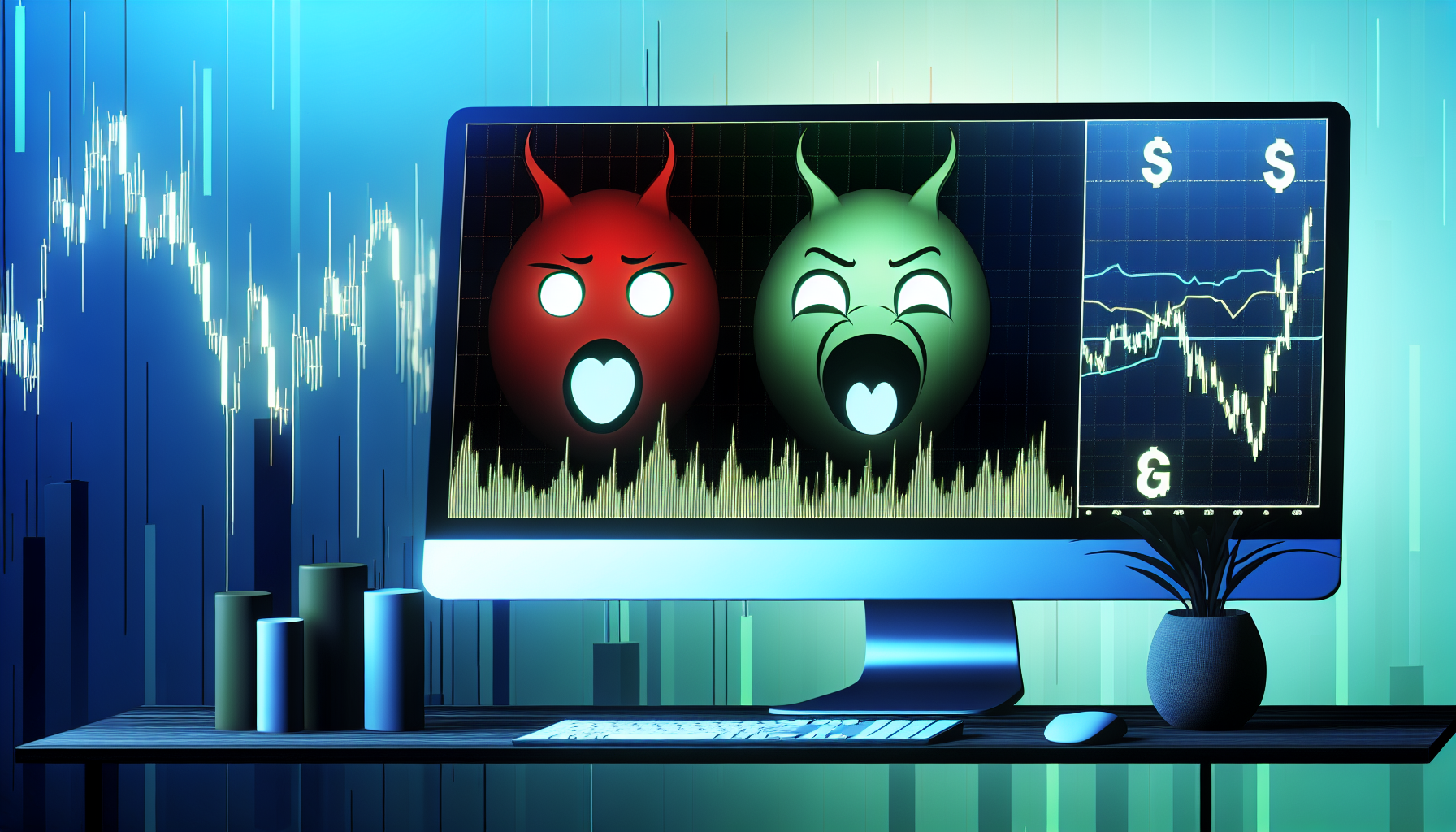
#StockMarket #FearGreedIndex #MarketSentiment
Today in the Stock Market: A Tale of Fear, Greed, and Market Sentiment
As the stock market closed on December 11, 2024, it was clear that the day had been a rollercoaster of emotions, driven by a complex interplay of economic indicators, corporate news, and the ever-present forces of fear and greed.
The Fear & Greed Index: A Barometer of Market Sentiment
To understand the mood of the market, we turn to the Fear & Greed Index, a tool developed by CNN Business to gauge investor sentiment. This index is calculated based on seven key indicators: stock price momentum, stock price strength, stock price breadth, put and call options, junk bond demand, market volatility, and safe-haven demand. Each of these indicators is standardized and equally weighted to produce a score ranging from 0 (Extreme Fear) to 100 (Extreme Greed)[1][3].
Today, the Fear & Greed Index hovered around the mid-50s, indicating a balanced market sentiment, neither overly fearful nor excessively greedy. This moderate reading suggests that investors are cautious but not panicked, reflecting a mix of positive and negative news.
Market Movements and Economic Indicators
The stock market's performance today was influenced by several economic indicators and corporate announcements. The Consumer Price Index (CPI) data, released earlier in the day, showed a slight increase in inflation, which can impact interest rates and, consequently, stock prices. This news led to a mixed reaction, with some sectors, such as technology, experiencing a slight downturn, while others, like consumer staples, remained relatively stable[5].
The S&P 500, a benchmark for the overall health of the U.S. stock market, ended the day with a minor gain, reflecting the balanced sentiment indicated by the Fear & Greed Index. The Dow Jones Industrial Average also saw a modest increase, driven by strong performances from its constituent companies.
The Role of Fear and Greed
Fear and greed are the two predominant emotions that drive investor decisions. When fear dominates, investors tend to sell off stocks, driving prices down. Conversely, when greed takes over, investors are more likely to buy, pushing prices up. Today's moderate Fear & Greed Index score suggests that neither fear nor greed is in the driver's seat, indicating a more rational approach to investing.
Historically, extreme readings on the Fear & Greed Index have been indicative of significant market events. For example, during the 2008 financial crisis, the index plummeted to extreme fear levels, while during the bull market of 2017, it soared to extreme greed levels[3].
Sector Performance
Several sectors saw notable movements today. The technology sector, often a bellwether for market sentiment, experienced some volatility. Stocks like $AAPL and $GOOGL were down slightly, possibly due to concerns over future earnings and the impact of inflation on consumer spending.
On the other hand, the healthcare sector performed well, with stocks like $JNJ and $PFE seeing gains. This could be attributed to positive news from clinical trials and the ongoing demand for healthcare services.
Market Volatility
Market volatility, or the degree of variation in stock prices, was relatively low today. This stability is a welcome respite from the high volatility seen in recent months, which has been driven by systemic factors such as economic changes and political events, as well as specific factors like company performance and sector-specific news[2].
Volatility is a natural part of stock markets and can represent both a risk and an opportunity for investors. Managing volatility is crucial, requiring careful analysis and a long-term perspective.
Investor Sentiment and Market Timing
Gauging market sentiment is critical for investors, and the Fear & Greed Index is a valuable tool in this regard. It can help inform investment strategies, particularly in relation to market timing, risk management, and portfolio rebalancing.
A contrarian approach often proves beneficial when the Fear & Greed Index indicates extreme readings. For instance, during periods of extreme fear, it might be a good time to buy undervalued stocks, while periods of extreme greed could signal a need to sell overvalued stocks[3].
Regulatory and Economic Context
The stock market operates within a broader economic and regulatory context. Regulatory bodies play a crucial role in maintaining market integrity and protecting investors. Today, there were no major regulatory announcements, but ongoing discussions about monetary policy and interest rates continue to influence investor sentiment.
Economic indicators such as GDP growth, interest rates, and inflation also play significant roles in shaping market movements. As the global economy navigates through various challenges, these indicators will remain key factors in determining the direction of the stock market.
Conclusion
Today's market activity was characterized by a balanced sentiment, reflected in the moderate reading of the Fear & Greed Index. The interplay between economic indicators, corporate news, and investor emotions continues to shape the stock market.
As investors, understanding these dynamics is crucial for making informed decisions. Whether you are a seasoned investor or just starting out, keeping an eye on the Fear & Greed Index and other market indicators can help you navigate the complexities of the stock market.
In the ever-changing landscape of finance, staying informed and maintaining a long-term perspective are key to success. As we close out the trading day, it is clear that the stock market remains a dynamic and resilient system, driven by the emotions and actions of its participants.









Leave a Reply